How to Survive a Supervolcano Eruption
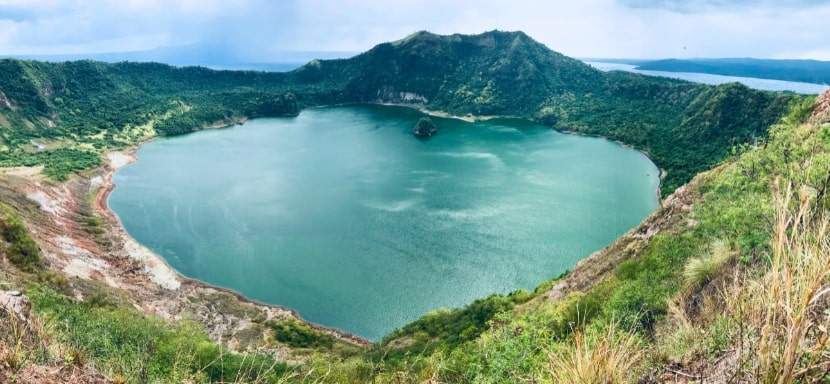
How to Stay Safe During a Supervolcano Eruption
A supervolcano eruption can spew over 1,000 cubic kilometers of ash and lava, altering the climate and affecting life worldwide—are you prepared to survive it?
Surviving a supervolcano eruption may sound like something out of a disaster movie, but it’s a real scenario worth preparing for. While it’s not a joint event, knowing what to do can make all the difference.
In this guide, we’ll explore practical tips and safety strategies for navigating the chaos if a supervolcano decides to make its presence known.
Key Points
- Preparation is Key: Stockpile essentials, create an emergency kit, and develop a family plan to stay ready.
- Stay Informed and Protected: Use reliable sources for updates, wear respiratory protection, and follow safety protocols during and after the eruption.
- Community and Self-Sufficiency: Build resilience through community support, self-sufficient gardening, and continuous skill development.
Understanding Supervolcanoes
What is a Supervolcano?
A supervolcano can produce an eruption with an ejecta volume greater than 1,000 cubic kilometers. These eruptions can cause widespread devastation and long-term changes to the climate. Unlike typical volcanoes, supervolcanoes are less frequent but far more impactful.
Famous Supervolcanoes
The most well-known supervolcanoes are Yellowstone in the United States, Toba in Indonesia, and Taupo in New Zealand. Each has the potential to cause significant global effects.
The Science Behind Supervolcanoes
Supervolcanoes form when magma from the Earth’s mantle rises into the crust but cannot break through. The pressure builds until it finally erupts, leading to massive explosions and ash clouds that can affect the entire planet.
Ten Quick Tips for Surviving a Supervolcano Eruption
Use these ten quick tips for surviving a supervolcano eruption to protect yourself and your loved ones. They cover preparation, safety, and recovery.
- Stockpile Essentials: Gather at least a three-month supply of non-perishable food, water, and medical supplies to ensure your household can sustain itself during and after the eruption.
- Create an Emergency Kit: Assemble a portable kit with items like a flashlight, batteries, a first-aid kit, dust masks, and a multi-tool to help you in case of an evacuation.
- Develop a Family Plan: Discuss and practice emergency plans with your family, including meeting places and communication strategies in case you get separated.
- Stay Informed: Keep a battery-powered radio or other reliable source of information handy to receive real-time updates and instructions from authorities.
- Protect Your Lungs: Use N95 masks or cover your nose and mouth with a wet cloth to filter out harmful ash particles, especially if you need to go outside.
- Seal Your Home: Close all windows, doors, and ventilation systems to prevent ash from entering your living space and compromising air quality.
- Prepare for Evacuation: Follow designated evacuation routes and leave promptly if authorities advise, avoiding low-lying areas prone to flooding or heavy ashfall.
- Ensure Water Safety: Use bottled or boiled water before drinking to avoid consuming contaminated water that may be affected by ash and other pollutants.
- Clean Up Ash Safely: Wear protective clothing and moisten the ash before sweeping to minimize dust. Dispose of ash properly to protect your health and the environment.
- Focus on Mental Health: Seek support from mental health professionals and stay connected with loved ones to manage stress and trauma during and after the disaster.
Preparing for a Supervolcano Eruption
Stockpiling Essentials
To survive a supervolcano eruption, gathering and storing essential supplies is crucial. Aim for at least a three-month supply for your household, focusing on:
- Non-perishable food: Canned goods, dried fruits, nuts, grains, and other foods with long shelf lives.
- Water: At least one gallon per person per day.
- Medical supplies: Prescription medications, over-the-counter pain relievers, and a well-equipped first-aid kit.
- Personal hygiene items: Soap, toothpaste, sanitary products, and disinfectants.
Creating an Emergency Kit
In addition to stockpiling essentials, prepare a portable emergency kit with the following items:
- Flashlight: Along with extra batteries for navigating in low-light conditions.
- First-aid kit: Including bandages, antiseptics, and necessary medications.
- Dust masks or N95 respirators: To protect from inhaling volcanic ash.
- Multi-tool: Useful for various tasks, from cutting materials to making repairs.
- Important documents: Identification, insurance papers, and emergency contact information in a waterproof container.
Having this kit ready can save valuable time and provide peace of mind if you need to evacuate quickly.
Developing a Family Plan
A clear and practiced family emergency plan is critical. Key components of a solid plan include:
- Designated meeting places: Identify and agree on meeting locations near your home and farther away if you get separated.
- Communication strategies: Discuss how to check in with each other using social media, phone calls, or designated hotlines.
- Regular drills: Practice the plan regularly to ensure everyone knows what to do and where to go.
During the Eruption
Staying Informed
During a supervolcano eruption, information is your lifeline. Ensure you have a battery-powered radio to receive updates from authorities. This will help you stay informed about:
- Evacuation orders: Knowing when and where to go is critical.
- Safety advisories: Information on hazardous areas and recommended precautions.
- Shelter locations: Places you can go for safety and assistance.
Indoor Safety
If you are indoors when the eruption starts, prioritize your safety by following these steps:
- Seal your home: Close all windows and doors to prevent ash from entering.
- Shut down ventilation: Turn off any systems that draw in outside air, such as HVAC units, to avoid ash infiltration.
- Stay inside: Avoid going outdoors unless necessary to minimize exposure to ash and other hazards.
Respiratory Protection
Volcanic ash is hazardous to your lungs, so it’s vital to protect your respiratory system:
- N95 masks: Use these masks to filter out ash particles if you need to go outside.
- Wet cloths: If masks are not worn, cover your nose and mouth with a damp cloth to reduce ash inhalation.
- Minimize exposure: Stay indoors as much as possible to limit exposure to harmful ash.
Safe Evacuation
If authorities advise evacuation, take immediate action:
- Follow evacuation routes: Use the designated routes to avoid dangerous areas and ensure a safer exit.
- Avoid low-lying areas: These areas are prone to flooding and heavy ashfall, which can be hazardous.
- Prepare your vehicle: Ensure your car is in good condition, has a full gas tank, and is equipped with emergency supplies.
After the Eruption
Cleaning Up Ash
Cleaning up volcanic ash requires caution and the right approach to avoid health hazards:
- Wear protective clothing: Ensure you are fully covered with long sleeves, long pants, gloves, and masks to protect your skin and respiratory system.
- Moisten ash before sweeping: Lightly spray it with water to prevent it from becoming airborne and reduce dust inhalation risks.
- Sweep carefully: Use a broom to collect the ash into manageable piles.
- Proper disposal: Ash should be disposed of in sealed plastic bags to prevent it from affecting vegetation and waterways. Check local guidelines for safe disposal practices.
Water and Food Safety
After a supervolcano eruption, water and food safety becomes a top priority due to potential contamination:
- Use bottled water: Rely on bottled water for drinking and cooking whenever possible.
- Boil water: If you must use tap water, boil it for at least one minute to kill any contaminants.
- Food safety: Avoid consuming food that has been exposed to ash. If food has come into contact with ash, discard it to prevent ingesting harmful particles.
- Clean surfaces: Thoroughly clean kitchen surfaces and utensils before use to ensure they are ash-free.
Mental Health Considerations
The aftermath of a supervolcano eruption can be psychologically challenging. Addressing mental health is crucial for recovery:
- Seek professional help: If you experience anxiety, depression, or PTSD symptoms, don’t hesitate to consult mental health professionals for support and guidance.
- Stay connected: Maintain regular contact with loved ones. Sharing experiences and offering mutual support can provide significant emotional comfort.
- Engage in self-care: To manage stress, practice self-care routines such as regular exercise, healthy eating, and mindfulness techniques.
- Community support: Participate in community recovery efforts. Being part of a supportive community can foster resilience and help you cope with the aftermath.
Did You Know?
Supervolcano eruptions can release enough ash and gas into the atmosphere to potentially trigger a “volcanic winter,” a period of significant global cooling that can last for several years and drastically affect agriculture and ecosystems around the world.
Long-Term Survival Strategies
Gardening and Self-Sufficiency
Ash can affect soil quality, making gardening challenging. However, starting a garden indoors or using raised beds can help. Focus on crops that are resilient and require less maintenance.
Building Community Resilience
Communities that work together are more resilient. Join or form local groups focused on disaster preparedness and support each other through shared resources and knowledge.
Learning New Skills
Enhancing your skills can improve your chances of survival. Learn basic first aid, emergency response, and even skills like carpentry or mechanics that can be invaluable during a prolonged crisis.
Common Misconceptions
Myth: Supervolcano Eruptions are Always Predictable
While scientists monitor supervolcanoes closely, predicting the exact timing of an eruption is difficult. It’s essential to stay prepared even if there’s no immediate threat.
Myth: Supervolcanoes Only Affect Nearby Areas
The impact of a supervolcano eruption can be global. Ash clouds can travel thousands of miles, affecting air travel, weather patterns, and agriculture worldwide.
Myth: There’s Nothing You Can Do to Prepare
Preparation can significantly improve your chances of surviving a supervolcano eruption. Simple steps like stockpiling supplies and having an emergency plan can make a big difference.
Supervolcano FAQs
What should I include in my emergency kit?
Your emergency kit should include non-perishable food, water, a flashlight, batteries, a first-aid kit, dust masks, and a multi-tool. Customize it based on your family’s needs.
How can I protect my lungs from ash?
To filter out ash particles, wear N95 masks or cover your nose and mouth with a wet cloth. Staying indoors and sealing your home can also help.
Is it safe to drink tap water after a supervolcano eruption?
Tap water may be contaminated after an eruption. Use bottled water or boil water before drinking to ensure it’s safe.
How can I clean up volcanic ash safely?
Wear protective clothing, gloves, and masks. Moisten ash is used before sweeping to reduce dust and must be disposed of properly to avoid environmental damage.
Can supervolcanoes affect the climate?
Supervolcano eruptions can inject large amounts of ash and gases into the atmosphere, leading to global cooling and climate change.
What are the chances of a supervolcano erupting in my lifetime?
Supervolcano eruptions are sporadic, occurring at intervals of hundreds of thousands of years. However, given their potential impact, it is still wise to be prepared.
Final Thoughts on How to Survive a Supervolcano Eruption
Surviving a supervolcano eruption requires preparation, knowledge, and community support. Understanding the risks and taking proactive steps can increase your resilience in the face of such a catastrophic event. Remember, it’s better to be prepared and never need these skills than to be caught off guard when disaster strikes.
Largest Supervolcanoes Known Around the World
Supervolcanoes are immense and powerful natural phenomena capable of altering the global climate and geography. Here’s a list of the largest known supervolcanoes around the world:
-
Yellowstone Caldera, USA: Located in Yellowstone National Park, this caldera is one of the most famous and studied supervolcanoes. Its last major eruption occurred approximately 640,000 years ago.
-
Toba Caldera, Indonesia: Situated on the island of Sumatra, Toba’s eruption around 74,000 years ago is considered one of the most potent volcanic events in the last 2 million years.
-
Taupo Caldera, New Zealand: The Taupo Volcano had its most significant eruption around 26,500 years ago, known as the Oruanui eruption, the most recent supereruption on Earth.
-
Aira Caldera, Japan: Located in southern Japan, the Aira Caldera formed approximately 22,000 years ago and is part of the active Sakurajima volcano.
-
Valles Caldera, USA: Found in New Mexico, this caldera’s last major eruption occurred about 1.25 million years ago, contributing to the volcanic field that shapes the region today.
-
Campi Flegrei, Italy: Also known as the Phlegraean Fields, this caldera near Naples has had several significant eruptions over the past 40,000 years and remains a high-risk area due to its proximity to populated regions.
-
Long Valley Caldera, USA: Located in eastern California, the Long Valley Caldera’s massive eruption took place around 760,000 years ago, forming one of the largest calderas in the world.
-
Lake Taupo, New Zealand: Though part of the larger Taupo Volcanic Zone, the Lake Taupo caldera is noteworthy for its significant eruptions, including the recent one about 1,800 years ago, which had widespread impacts.
More Doomsday Scenarios
How to Survive a Worldwide Communications Breakdown
Imagine waking up to silence. Your phone doesn’t buzz, your email won’t load, and even your local…
How to Survive a Worldwide Economic Collapse
When we hear “economic collapse,” it conjures images of chaos, scarcity, and instability. While the…
How to Survive a Robot Uprising
Robots: one minute they’re cleaning our homes or delivering pizza, and the next, they’re plotting…
How to Survive a Totalitarian Regime
In a world where governments control everything from curfews to thoughts, knowing how to…
How to Survive an EMP Attack
Imagine waking up to find your entire world plunged into darkness—no electricity, no functioning…
Recent Survival Posts
How to Survive a Layoff
Layoffs feel personal—even when they’re not. One day, you’re responding to Slack messages and forwarding…
How to Survive a Drug Test
I never imagined I’d be so emotionally invested in a paper cup. But there I was, standing under the fluorescent…
How to Survive an Interrogation
If you’ve ever been caught in the crosshairs of an overly enthusiastic mall cop or stared down by someone…
How to Survive a Nightclub Shooting
Nightclubs pulse with life—lights flashing, music pounding, bodies packed tight on the dance floor. It’s a place to…
How to Survive a Bachelor Party
A bachelor party is a delicate mix of celebration, chaos, and questionable decision-making, wrapped…
More Real-Life Survival Scenarios

How to Survive a Worldwide Economic Collapse
When we hear "economic collapse," it conjures images of chaos, scarcity, and instability. It is one of the doomsday scenarios that could happen in reality, and while the thought can be overwhelming, preparing for such a situation doesn't require an underground bunker...

How to Survive a Robot Uprising
Robots: one minute, they’re cleaning our homes or delivering pizza, and the next, they’re plotting global domination. How did we get here? Somewhere between asking Alexa for the weather and teaching AI to write poetry, we gave machines just enough intelligence to turn...

How to Survive a Totalitarian Regime
In a world where governments control everything from curfews to thoughts, knowing how to survive a totalitarian regime is crucial. History shows us that such regimes crush freedoms, spread fear, and twist truth into propaganda. But don't panic—if people survived in...
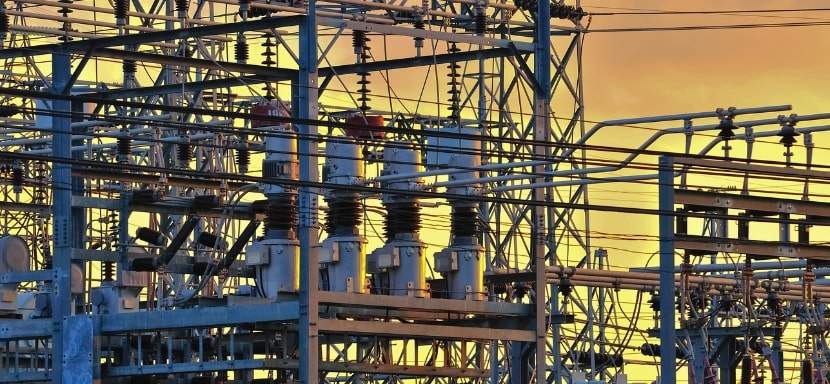
How to Survive an EMP Attack
Imagine waking up to find your entire world plunged into darkness—no electricity, functioning vehicles, or communication. This is the terrifying reality of an EMP (electromagnetic pulse) attack. It can strike without warning, and when it does, it affects more than...

How to Survive a Drone Attack
In today's world, the threat of drone attacks is increasingly becoming a reality. These unmanned aerial vehicles (UAVs) are used for surveillance, military operations, and commercial purposes. However, in the wrong hands, they can become tools of destruction....
More Survival Scenarios

How to Survive a Layoff
When the Floor Falls Out: The Reality of a Layoff Layoffs feel personal—even when they're not. One day, you're responding to Slack messages and forwarding emails. Next, you're staring at your monitor as it logs you out... for good. Whether it's a restructuring, a...

How to Survive a Drug Test
The Cup, The Room, The Truth I never imagined I’d be so emotionally invested in a paper cup. But there I was, standing under the fluorescent hum of a strip-mall clinic, trying to recall the last time I ate a poppy seed bagel. That’s the thing about drug tests—they...

How to Survive an Interrogation
If you've ever been caught in the crosshairs of an overly enthusiastic mall cop or stared down by someone in a uniform with a clipboard and a glare, you’ve felt it — the chilly fingers of interrogation anxiety. And while most of us imagine interrogation scenes as...

How to Survive a Nightclub Shooting
Nightclubs pulse with life—lights flashing, music pounding, bodies packed tight on the dance floor. It’s a place to escape, feel the rhythm, and lose yourself in the crowd. But that same energy can turn deadly in seconds, transforming a night of fun into one of the...

How to Survive a Bachelor Party
A bachelor party is a delicate mix of celebration, chaos, and questionable decision-making, wrapped in the noble intention of sending the groom off into married life with a night he’ll (hopefully) remember. It’s a ritual as old as time—well, as old as men deciding...

How to Survive Your First Time at the Gym
Walking into a gym for the first time can feel like stepping into an alien world. The machines hum with purpose, the regulars move confidently, and you’re left standing there, clutching your water bottle, wondering whether you’re in the right place—or on the right...

How to Survive a Worldwide Communications Breakdown
Imagine waking up to silence. Your phone doesn’t buzz, your email won’t load, and even your local radio station crackles with static. A worldwide communications breakdown has hit. What next? For many, this doomsday scenario may sound like the opening lines of a...
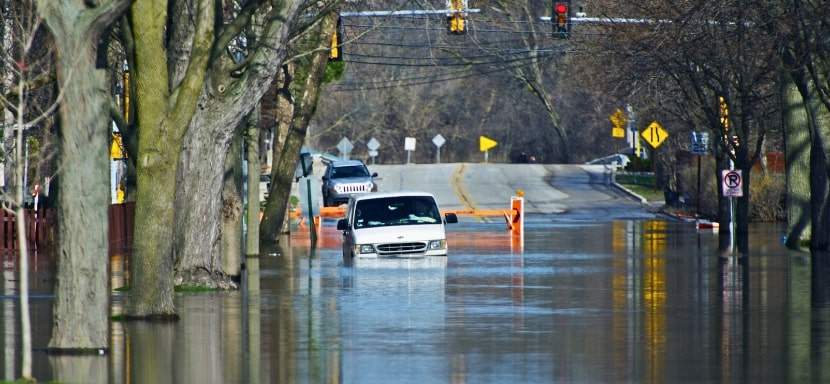
How to Survive a Flash Flood While Driving
Surviving a flash flood while driving requires quick thinking, calmness, and a solid plan to ensure your safety. Preparation can make all the difference between a close call and a catastrophe in emergencies like this. This guide provides practical advice to protect...
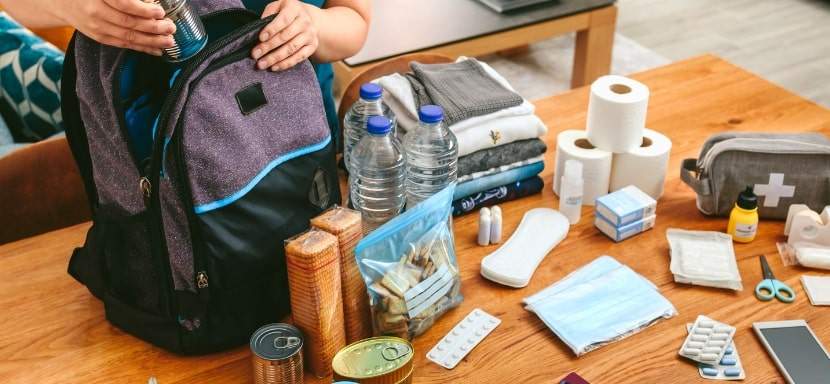
How to Build an Emergency Kit
Emergencies don’t knock politely at the door. They barge in, uninvited, like a distant relative with a penchant for drama, turning your world upside down without warning. Whether it’s a power outage, a natural disaster, or an unexpected evacuation, the key to staying...
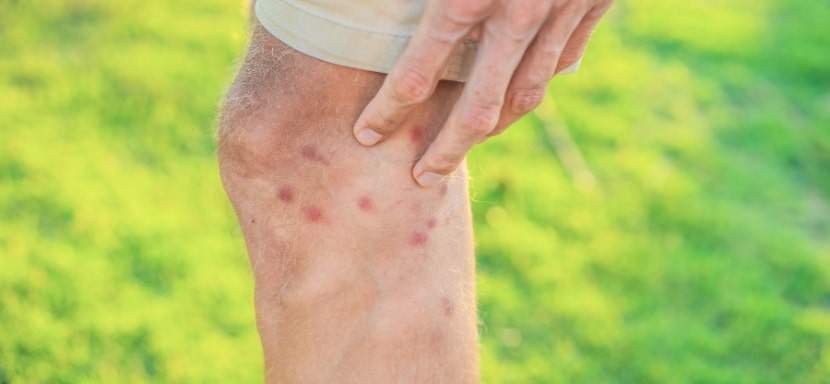
How to Protect Yourself From Insects in the Wild
There’s nothing like being out in the wild—birdsong echoing through the trees, the fresh scent of earth, and a deep sense of peace that makes you think, “Ah, this is what life is about.” But then comes the buzzing. Mosquitoes, ticks, and flies swoop in like uninvited...
